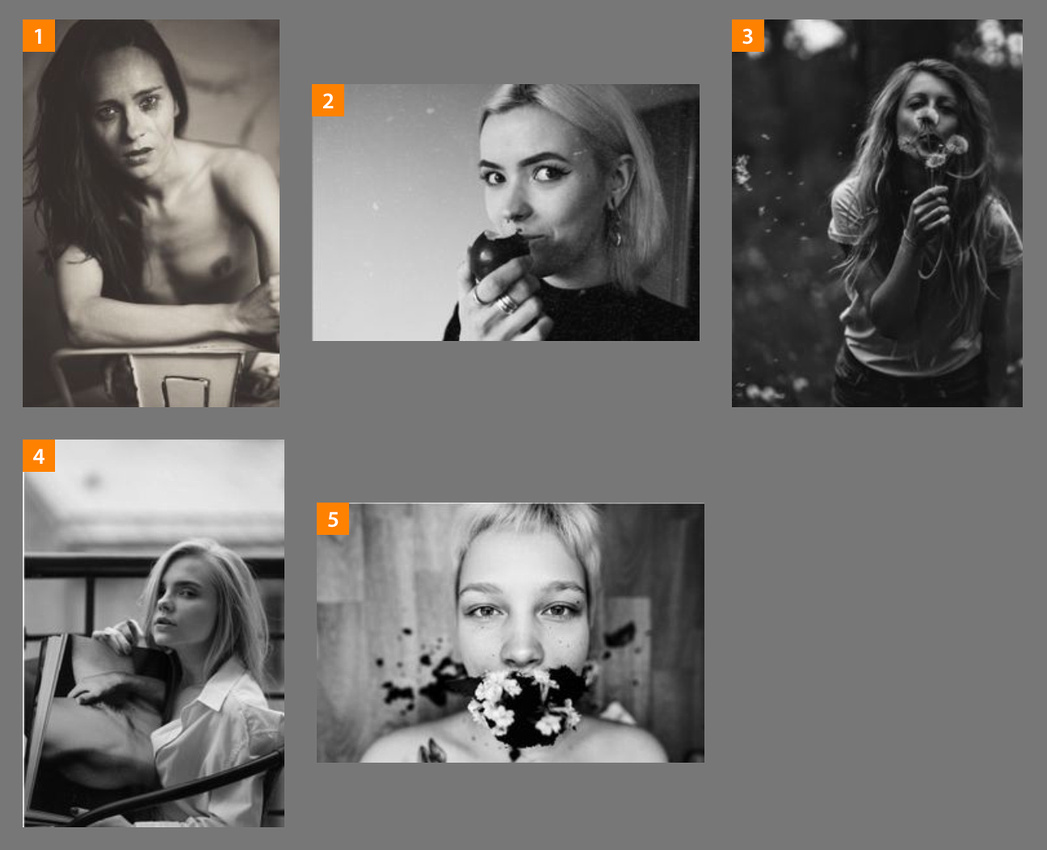
Hello, Eliza,
Thank you for sharing your work with us. What you said about loving and capturing other people's souls is the very core of good Portraiture. No matter how skillful a portraitist is, if they don't feel the need to express their love for their subject, the result will never be the best that could be. Paul Strand once said: "It is easy to make a picture of someone and call it a portrait. The difficulty lies in making a picture that makes the viewer care about a stranger." This what I am looking for when I see portraits. And when I find it, it means that the photographer has done a great job.
Your photography is captivating, touching, and highly emotive. The monochrome reinforces the emotional load as it is emotive in and of itself. But the fact is that the emotional load of the pictures does not depend on the monochrome and only; it depends on your emotional state during the shooting. You said that you try to make women feel comfortable with you while photographing them, but from what I see here, there is no need for you to do much. I do not know how you look or how you are being while working but your images are solid proofs that the people trusting you. This is a high privilege for a portrait photographer and a passport for reaching the highest levels of your art. I have to say though that some photos work better than others for me. Without dropping the value and effort of the other images, pictures 1, 3, and 4 are the ones that I am seeing a strong connection with the subject, as well as a much more attentive vision full of creativity. Picture 5, on the other hand, feels a bit forced and pretentious. And I see that in both the subject, how she responds to the camera, and in your approach as well. For example, the wide-angle lens combined with the short distance of the subject from the camera gave this distorted perspective that breaks any sense of realism. Your imagery needs realism. I do not mean sterile realism, but the feeling of real connection between the subject and you, therefore your audience. This truthful connection is fully active in the three images I selected, and this makes me care about those women. This is successful portraiture, Eliza, portraiture that captivates the eye and triggers the mind. We are hardwired in connecting with others, even via two-dimensional images. To feel that connection though we need to feel first that what is going on between us and the depicted person is real, and it is not just an illusion that has nothing to do with us. Sometimes that essential feeling of realism may occur indirectly, through a strictly visual quality. This may sound strange but it happens. Picture 2 is a good example of what I mean. Whereas the response of the subject to the lens feels truthful, what is actually reinforces it is the dust and scratches on the pictorial surface. This aesthetic element adds truthfulness in the image, a kind of truthfulness that does not associate with the subject but in the end, it affects it positively. I am not asserting that you have to do this all the time, of course. It is a matter of synchronization. In this case, the subject has been synchronized with the visual qualities of the image, but if you try doing it in picture 1, for instance, it may not work. The understanding of what it works and what is not is a very sensitive, very delicate process that cannot be measured or quantized.
As I said before, the monochrome with its innate emotional load helps your work to express your feelings better. The duotone in picture 1 does the same thing but as the tones are warm and not neutral, it does something more: it widens the feeling of time. Duotones with warm tones, or sepia tones as we call them, associate with the distant past, making the subject look more melancholic. You may take advantage of this particular property of the sepia toning and make work that feels timeless.
To conclude, my answer to your main question is straightforward and resounding: Yes! Your photographs, even the less powerful, are honestly captivating. They speak to the viewer directly and honestly. I am very satisfied with this submission. Nonetheless, I want you to consider my comments as friendly pieces of advice and not as strict rules. I hate rules anyway. They stifle creativity. I wish you the best of luck in this contest.
See some recommendations below for extra help and inspiration
Take care.
Additional Recommendations
Photo Competitions
Other Resources
New Recommendations
Books (monographs)
Books (fine art philosophy & criticism)
Photographers (fine art & street)
Photo Competitions (fine art & street)
Photo Competitions (general & other)
Photo Competitions (portrait & commercial)
Relevant Quotes from Past Jurors
-
"Does the image tell the story or illustrate the photographer's vision clearly? The difference between a good photograph and a great one can be subtle, but a great photograph evokes an emotion/connection in the viewer. — Patricia Lanza, Director of Talent & Content, The Annenberg Space for Photography, Los Angeles, CA, USA
-
"Does the image tell the story or illustrate the photographer's vision clearly? The difference between a good photograph and a great one can be subtle, but a great photograph evokes an emotion/connection in the viewer. — Patricia Lanza, Director of Talent & Content, The Annenberg Space for Photography, Los Angeles, CA, USA
-
"What separates a good photo from a great photo is a feeling somewhere between what I feel physically and what I would call an 'aesthetic experience.' It's almost like the beginning of a love affair, you are just drawn to the image, you are lifted off your feet, you are moved. You just have to have it. You want to ask them to dance." — Sarah Leen, Director of Photography, National Geographic, Washington, DC, USA
-
"What separates a good photo from a great photo is a feeling somewhere between what I feel physically and what I would call an 'aesthetic experience.' It's almost like the beginning of a love affair, you are just drawn to the image, you are lifted off your feet, you are moved. You just have to have it. You want to ask them to dance." — Sarah Leen, Director of Photography, National Geographic, Washington, DC, USA
-
"When I judge a contest I look for photographs that make me feel something. Anything. I also look for stories that are original. I see thousands of stories a year and most are sadly quite similar. So a story that I haven’t seen before, or a unique approach to a story that I have seen before goes very, very far. Take chances!" — James Estrin, Co-Editor, New York Times Lens Blog, New York City, USA
-
"When I judge a contest I look for photographs that make me feel something. Anything. I also look for stories that are original. I see thousands of stories a year and most are sadly quite similar. So a story that I haven’t seen before, or a unique approach to a story that I have seen before goes very, very far. Take chances!" — James Estrin, Co-Editor, New York Times Lens Blog, New York City, USA
Books (business & practice of art & photography)
-
The Art of Photography: An Approach to Personal Expression, by Bruce Barnbaum
-
The Art of Photography: An Approach to Personal Expression, by Bruce Barnbaum
-
Finding Your Audience: An Introduction to Marketing Your Photographs by Mary Virginia Swanson
-
Finding Your Audience: An Introduction to Marketing Your Photographs by Mary Virginia Swanson
-
Article and debate on the pros and cons of using post-processing
-
Article and debate on the pros and cons of using post-processing
Photography Grants
]]>
The magazine https://www.magcloud.com/browse/issue/1825366
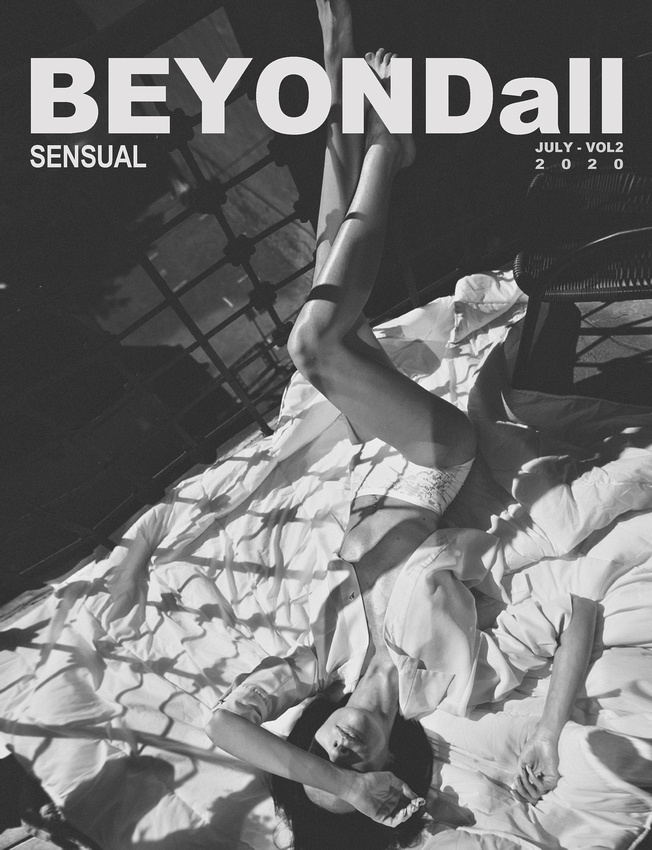
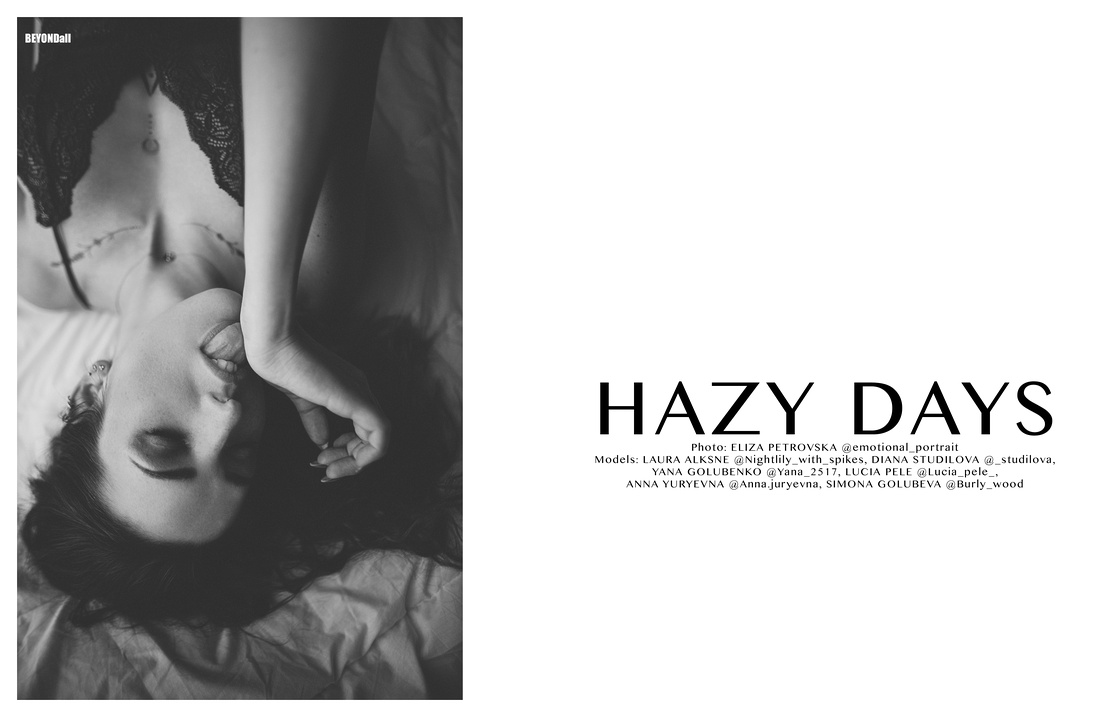


You can purchase the full magazine here: July issue
]]>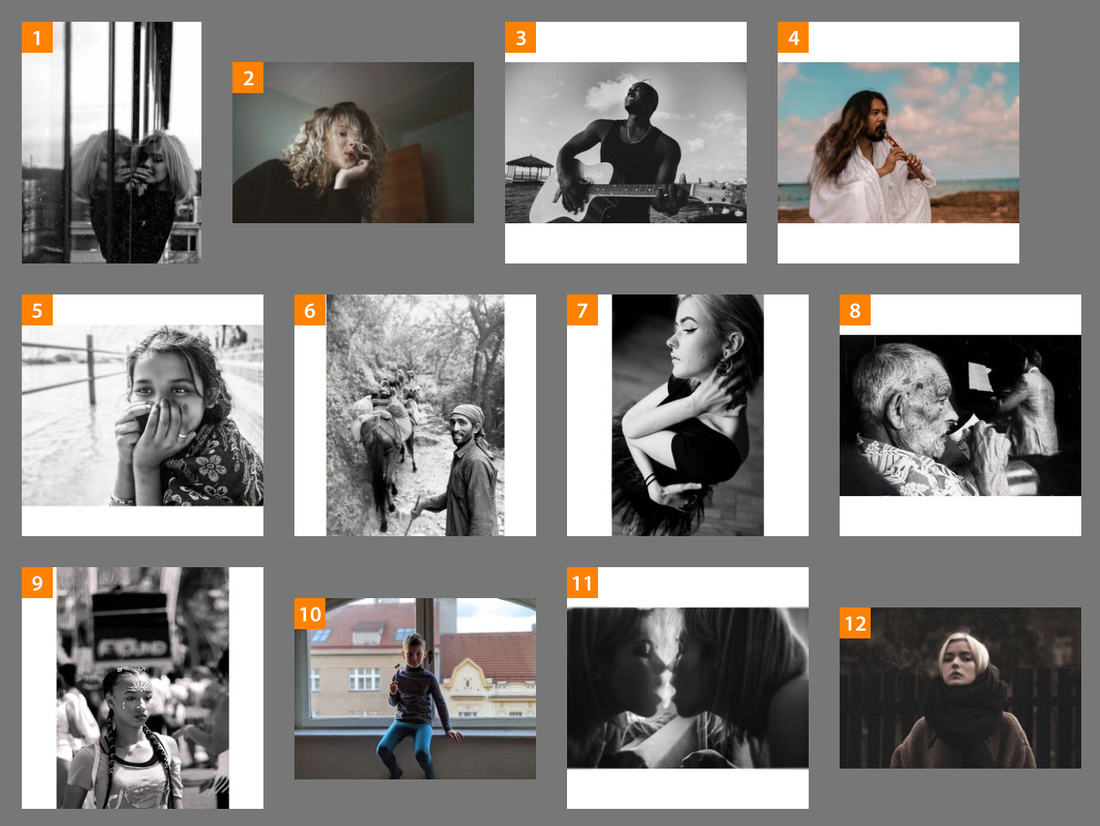
Hello, Eliza,
Thank you for taking the time to submit your work with us, and welcome to our support program. There is something raw about your pictures; something honest and unspoken that touched my artistic sensibilities from the very first moment. There is an ongoing dialogue about what makes a portrait picture to be portrait. According to the definition of Portraiture, a portrait photograph is the artistic representation of a person, in which the face and its expression are predominant. A portrait often shows a person looking directly at the camera to most successfully engage the subject with the viewer. For this reason, a portrait photograph is not a candidly taken shot but a pre-organized and staged shot of the subject. Personally, I find this definition pretty strict as it excludes pictures that do not follow the lines yet are surely compelling portraits. I am happy to say that your submission is a solid proof of my claim as there is no doubt that your pictures respect the depicted persons no matter if you have captured them candidly or you have preorganized the shots. I mean that in all your pictures there is a refined balance between staged and candid approach and to me, this gives the work its uniqueness. I firmly recommend you to seriously reflect on this issue as it may define your style in the future. From my standpoint as an art critic, what I can say for sure is that your wish of capturing people's souls and making them see themselves as beautiful has been successfully manifested by your photographs, and believe me, this is a lofty goal in and of itself. You see, there are many photographers out there whose words do not correspond to their images. Many are claiming about things they do or investigate but their photographs tell a different story. This usually happens when a photographer is not sure of what they truly want or seek. Of course, at some level, all artists seeking recognition and validation from their audience and peers but it is essential to understand and embrace their vision, helping it to maintain its integrity. To be effective, the images must be believable, and that might mean they aren’t always crowd-pleasing. For the vast majority of photographers, that’s the problem. It is a delicate balance. But ultimately, to me, you have to believe first in truth, your very personal truth either is pleasing or not, and the audience will come along ultimately. This "personal truth" seems to be present in your pictures, fueling your work with enough energy to move the viewer both emotionally and intellectually.
Aesthetically speaking, I noticed that you like working with both formats, color, and monochrome. What is interesting to me is that you seem to be very good at both styles, something rare these days. Your delicate use of both formats makes things difficult for me to decide which of the two looks more captivating and believable. Although color touches my artistic awareness more, I deeply respect the abstraction of the monochrome format. Black-and-white is more emotive. Color contemporizes a picture; it brings the subject into the realm of Now. The monochrome implies a timeless perspective of the subject, not always, but surely much easier than color. On the other hand, you are surely very skillful in using color, not just a stylistic element but also as a narrative device. So, while usually, I recommend photographers to focus on one format, in your case I will not do that and the reason is that the content of your pictures does not depend on the stylistic selections but mostly on your intuition. Your intuition allowed you to establish and maintain a certain aesthetic, a certain tone, and everything is reading as authentic, within that framework. Also, the white half-borders I see in most pictures give one more layer of content as they create a nice impression of a contact-sheet. Contact sheets were prints used mostly in the film era with which the photographers studied their shots to select the best for the final print. Some photographers still use this particular practice either for practical reasons or to give a study-like feeling in their work. I love this practice regardless if it is needed or not, as it gives some sort of personality to a work.
So, Eliza, my answer to your main question is a big YES. Monochromes or colored, candid or staged, your portrait pictures are way impactful and emotionally charged. I really enjoyed seeing and writing about your work. Consider my comments as friendly pieces of advice and not as strict rules. I hate rules. Rules stifle creativity. I am looking forward to seeing more of your work in the future.
Do not miss to check out some useful recommendations bellow, for more help and inspiration.
Take care.
Additional Recommendations
Photo Competitions
Other Resources
-
The Practical Art World: Suggestions for Writing your Artist's Statement
-
The Poetry of the Surface: Craftsmanship and Materiality in Photography
New Recommendations
Books (fine art philosophy & criticism)
Photographers (fine art & street)
Photo Competitions (fine art & street)
Photo Competitions (general & other)
Photo Competitions (portrait & commercial)
Relevant Quotes from Past Jurors
-
"Does the image tell the story or illustrate the photographer's vision clearly? The difference between a good photograph and a great one can be subtle, but a great photograph evokes an emotion/connection in the viewer. — Patricia Lanza, Director of Talent & Content, The Annenberg Space for Photography, Los Angeles, CA, USA
-
"What separates a good photo from a great photo is a feeling somewhere between what I feel physically and what I would call an 'aesthetic experience.' It's almost like the beginning of a love affair, you are just drawn to the image, you are lifted off your feet, you are moved. You just have to have it. You want to ask them to dance." — Sarah Leen, Director of Photography, National Geographic, Washington, DC, USA
-
"Every image should contribute something fresh and new to the series and help add character to the submission. A strong submission can be as few as 5 images, or as many as 10 or 15 or more." — Jim Casper, Editor & Publisher of LensCulture
Books (PJ and documentary philosophy and criticism)
Books (business & practice of art & photography)
-
The Art of Photography: An Approach to Personal Expression, by Bruce Barnbaum
-
Art and Visual Perception: A Psychology of the Creative Eye (Rudolf Arnheim)
-
Article and debate on the pros and cons of using post-processing
-
How to Assess and Edit Your Photographs by Karen Marshall (seminar leader)
Photography Grants
]]>
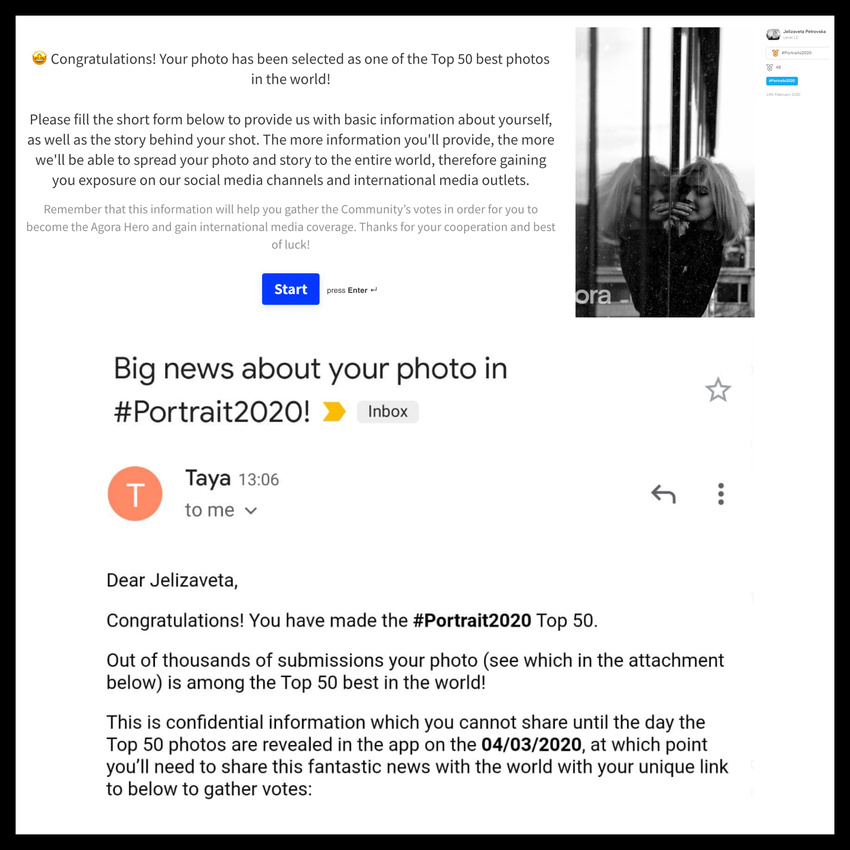 ]]>
]]>